Montana’s bears are not just wildlife; they are a living link to our shared natural heritage, each with a critical role in the ecosystem and a tale of its own. The state’s bear populations, both grizzlies and black bears, command respect, bridging the line between fascination and caution for these majestic creatures.
We’ll explore the lives of Montana’s grizzlies, renowned for their size and power, and the black bears that roam vast territories across the state. From their physical characteristics to behavioral patterns, we aim to paint a comprehensive picture of these iconic species.
Ever thought about what happens if you come face-to-face with a bear in Montana’s wilderness? Our insights into bear safety practices and tips for encounters will equip you with bear knowledge to navigate these situations.
- Related article: Explore Montana’s Wildlife
As you journey into the stories of these ferocious yet enchanting animals, you’ll discover a newfound respect for the delicate balance of nature and our place within it.
7 Key Takeaways on Montana Bears
- Montana’s bear population, encompassing black and brown bears, is central to the state’s rich ecosystem, and understanding bear behavior is vital to their conservation.
- Grizzly bears are key figures in Montana, with intriguing traits such as their ability to detect scents from miles away and an omnivorous diet, embodying the state’s wild spirit.
- Montana’s large population of grizzly bears distinguishes it as a sanctuary that supports their lifestyle, making education about bear safety and differences in species essential for people in bear country.
- Black bears, with a wide range of colors from black to cinnamon and blond, are solitary creatures except for family groups and are adept climbers known to sleep in tree junctions.
- Responsible practices, such as securing bear attractants and carrying bear spray, are crucial for safety both in residential areas and during outdoor adventures in bear country.
- Hunters are encouraged to be vigilant, disposing of waste properly to avoid attracting bears, removing harvested meat promptly, and being cautious in brushy areas where bears may rest.
- Montana offers unique bear tours, from sanctuaries like Montana Grizzly Encounter and the Grizzly & Wolf Discovery Center, enhancing understanding and promoting conservation efforts for these magnificent animals.
About Montana Bears
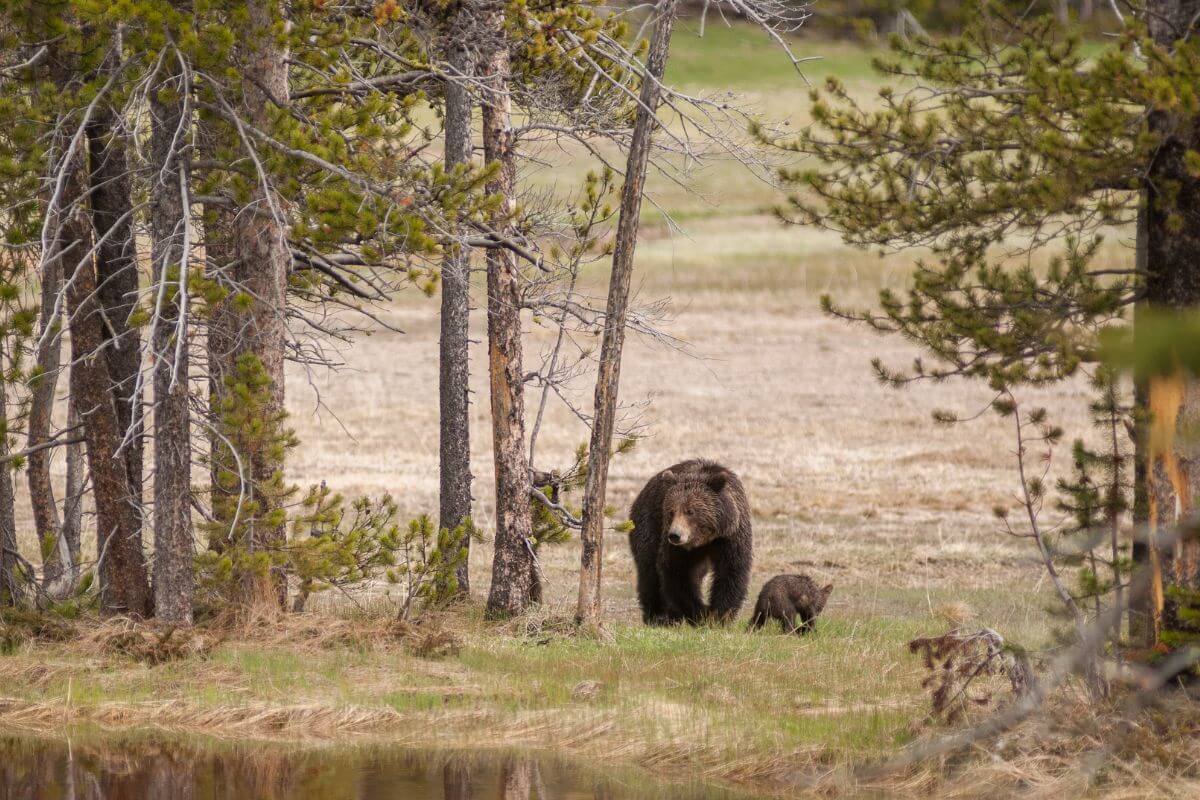
Montana’s bear population always commands fascination for its contribution to the state’s diverse ecosystem. Brown and black bears roam its vast forests and mountains, painting a vivid picture of wild Montana. Understanding these creatures not only enriches our appreciation for nature but also plays a crucial role in ensuring their conservation.
Montana Grizzlies
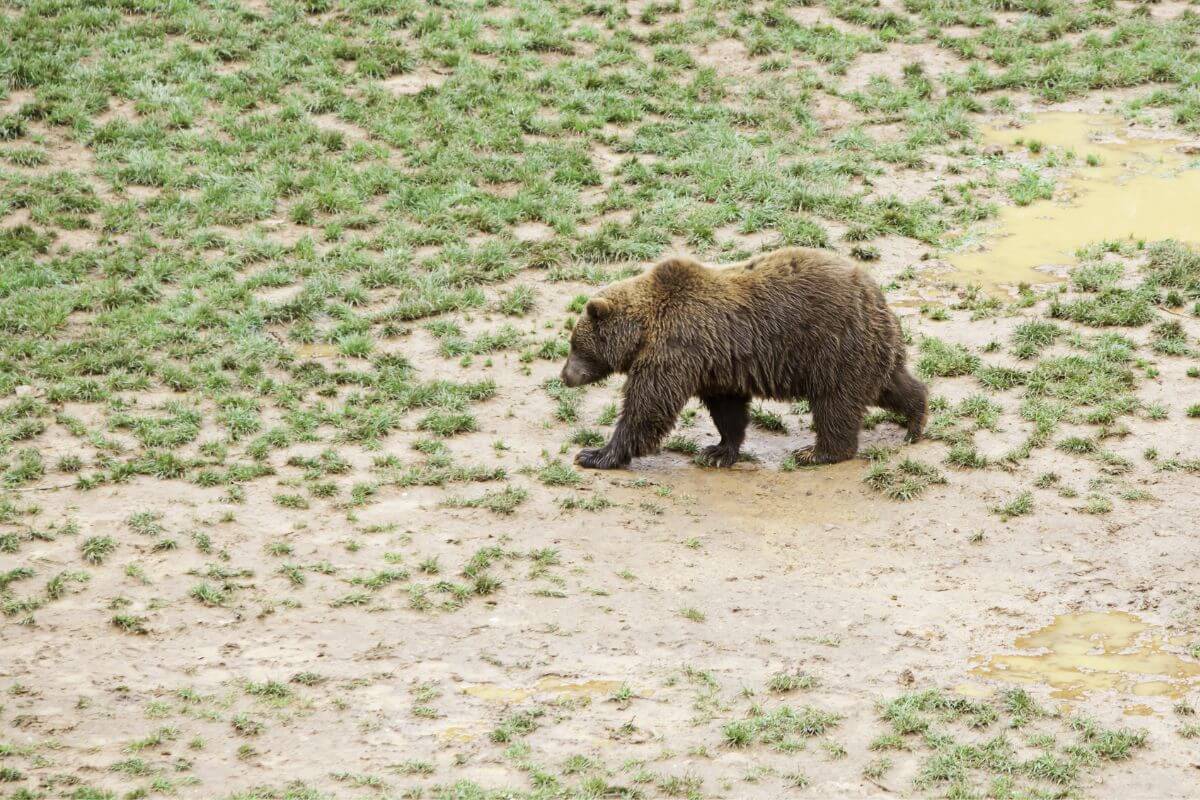
| Physical Characteristics | Description |
| Claws | Longer, curved |
| Shoulders | Humped |
| Face | Concave |
| Color | Light brown to black |
| Toes | Closer together |
The grizzly bear is the symbol of Montana’s wild heart, a fiercely iconic resident that calls the state home. They hold a unique place in our hearts and across the world, with their value deeply rooted in the state’s natural and cultural landscapes.
Grizzlies are important not only for their majestic presence but also for their essential roles in maintaining ecosystem balance. Grizzly bears are a vital part of our environment, yet their power and size can sometimes lead to conflicts.
Let me share a few fascinating facts about Montana grizzlies:
- Not True Hibernators – Although they are often thought of as hibernating, grizzlies technically enter a state called torpor, more like a very deep sleep.
- Early Risers – Grizzlies are early risers, typically emerging from their dens in March or April.
- Omnivorous Diet – Despite being classified as carnivores, grizzlies are true omnivores, enjoying a diet that includes everything from berries to occasional meat.
- Incredible Sense of Smell – Their sense of smell is extraordinary, capable of detecting scents from miles away.
- Solitary Behavior – These majestic creatures are known for their solitary behavior, with adult bears venturing alone through their territories.
Montana stands as a sanctuary for grizzly bears, harboring the largest population of these incredible creatures in the contiguous United States, after Alaska. This speaks to the vast and diverse landscapes in Montana that can support these animals’ unique needs and active lifestyles.
Montana Black Bears
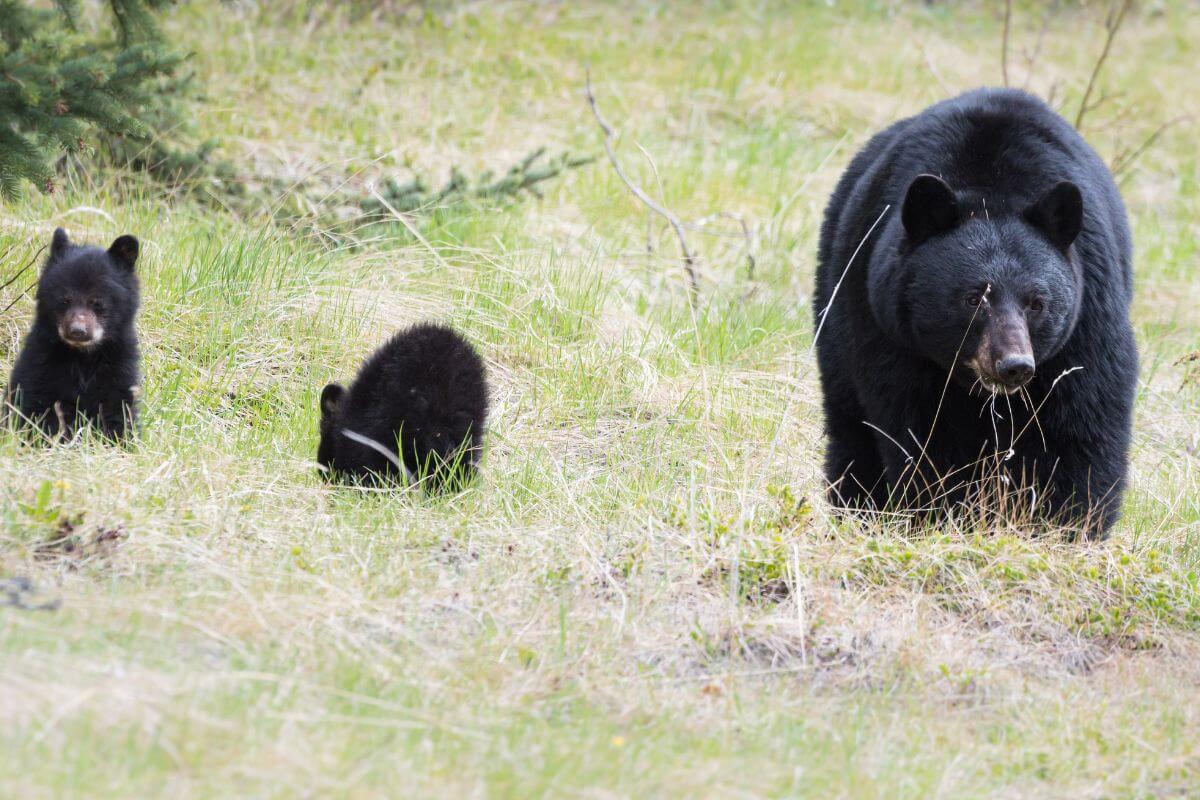
| Physical Characteristics | Description |
| Claws | Shorter |
| Shoulders | Not humped |
| Face | Straight |
| Color | Brown to black including cinnamon and blond |
| Toes | More separated |
Montana is home to a diverse population of black bears — native omnivores that roam across a large part of the state. Much like their grizzly bear cousins, the black bears’ habits and characteristics are fascinating to observe.
As a prized big game animal attracting black bear hunters from around the world who participate in fair-chase black bear hunting, here are some key points about black bears in Montana:
- Social Structure – They are typically solitary, except for a mother with cubs, forming a family group.
- Climbing Abilities – Black bears are excellent climbers and are commonly found in trees. They are known to sleep in the junctions of branches.
- Omnivorous Diet – Montana black bears feed on vegetation, berries, insects, and a range of animal meat.
- Color Variation – Don’t be misled by their name – their colors span from black to cinnamon and blonde, with no direct association with the name itself.
- Maturity and Lifespan – These bears reach maturity in around 3 years and can enjoy a lifespan of up to 25 years in the wild.
Encountering black bears in their natural habitat can provide a unique and memorable experience for those who appreciate wildlife.
Bear Safety Guidelines in Montana’s Bear Country
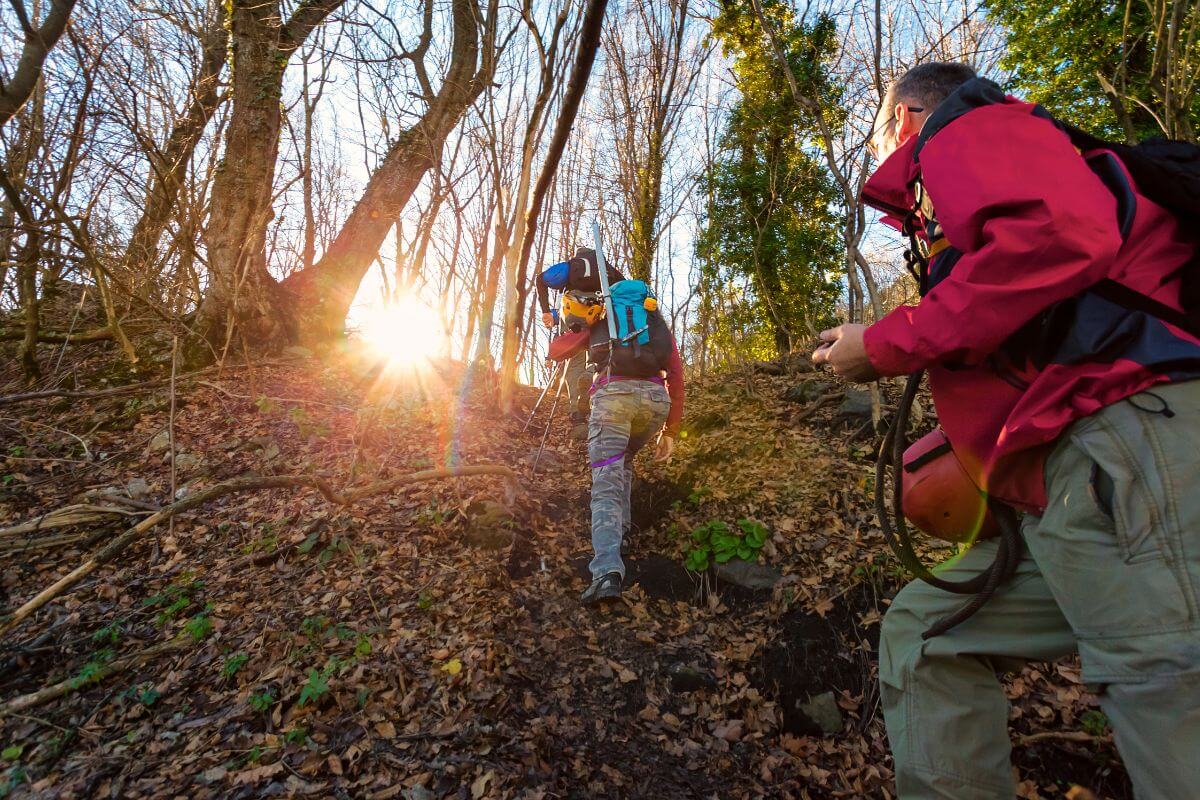
Understanding how to stay safe in Montana’s bear country is crucial for both residents and visitors. By following a few simple guidelines, you can help prevent bear encounters and ensure the safety of yourself and the bears.
Let’s dive into some practical tips that will help you navigate the great outdoors of Montana responsibly.
1. Residential Bear Safety Measures

Living near bears is a part of Montana’s natural appeal, but it comes with responsibility. Bears are food-driven and curious, which can sometimes lead to human-bear conflicts, especially if they get used to finding food easily from human sources.
Let’s keep both bears and people safe by following these bear safety protocols:
- Avoid Attracting Bears – Make sure your garbage and recycling are always kept in secure areas. Don’t feed birds during the active bear season. It’s simple, but it can make a big difference in not attracting bears to your property.
- Deterrents and Repellents – You can use tools to keep bears away from your space. Motion-activated sirens or lights, loud noises, and even electrified “Unwelcome” mats can deter grizzly bears.
One important fact to remember is that a bear’s memory is pretty impressive. If they find food in a particular spot once, they will likely come back hoping for more. This is why securing attractants, like garbage and pet food, is crucial to maintaining a safe living environment, both for humans and bears.
2. Bear Safety Practices During Outdoor Activities
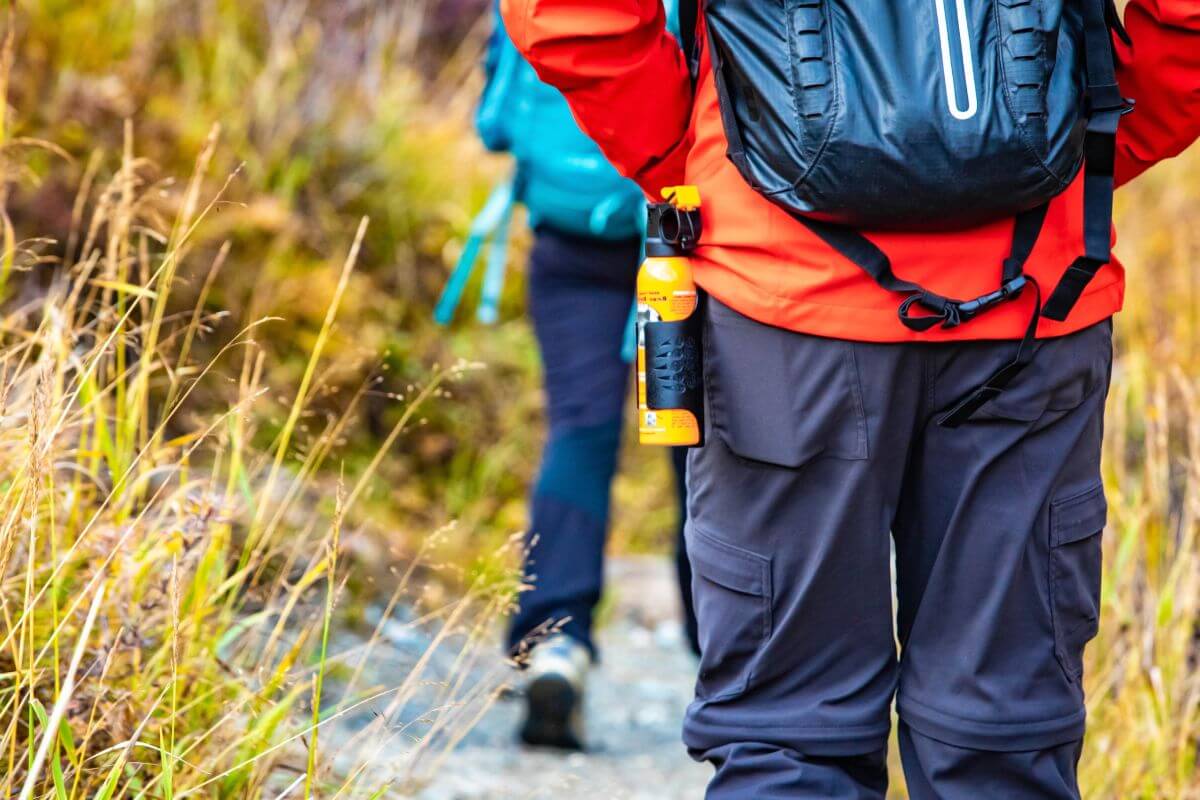
Montana’s outdoor adventures often bring you close to nature, including its majestic bears. As we explore, it’s essential to respect their habitat and practice safety to ensure a harmonious encounter.
Here are some tips to stay safe in bear country and during outdoor activities:
- Bear Spray – Pack bear spray in an easy-to-reach spot and learn how to use it effectively. It’s your best defense.
- Vigilance – Stay vigilant for signs of bear activity, particularly in areas with limited visibility like thick woods, bushy spots, or near water.
- Group Travel – Travel with a group and stay together, especially if younger ones are coming along.
- Noise Awareness – Be noisy! Making your presence known can help avoid startling bears. This is especially important in areas with limited visibility or when nature is making noise.
- Timing – Avoid moving around during twilight or at night; this is when bears are naturally more active.
- Camping Precautions – When camping, remember that bears have a keen sense of smell. Keep food and anything fragrant well out of reach in bear-proof containers or hung in trees.
- Adjust Speed – When out biking, jogging, or riding, go a bit slower than normal. It gives you time to spot a bear and also allows the bear time to move away if they are nearby. This is especially important in thick bush, around blind corners of a trail, or where there are berry patches.
Montana’s bears are intelligent and massively strong, so we need to be smart and proactive to have a safe adventure. Following these safety practices not only keeps us secure but also helps keep the bears wild and undisturbed.
3. Bear Safety Precautions for Hunters
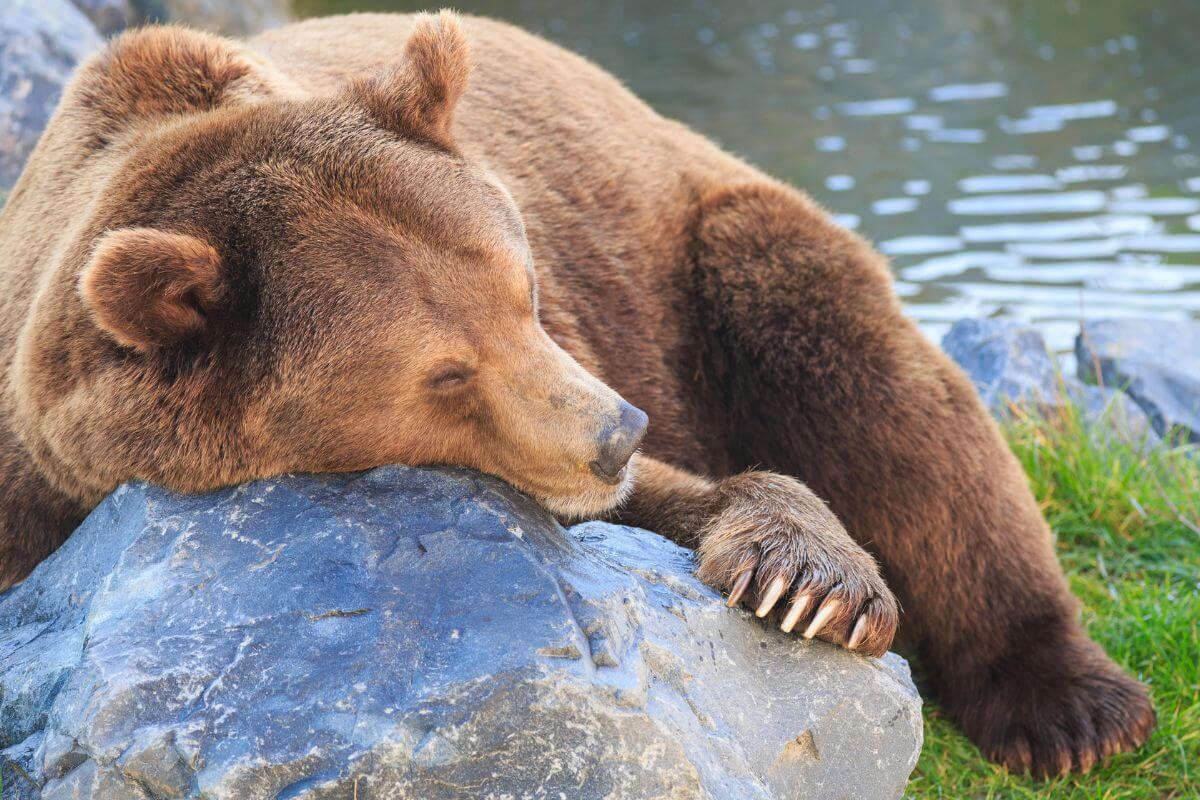
Montana Fish, Wildlife & Parks (FWP) makes every effort to ensure your safety in the great outdoors. This is especially critical for hunters in areas frequented by bears.
For angling enthusiasts, it’s best not to clean your fish at the campsite. Instead, pop the air bladder and dispose of the innards in a stream or lake. Also, avoid cleaning fish on picnic tables, as this can attract unwanted furry visitors.
If you’re out hunting in bear country, here are some simple bear safety tips to follow:
- Meat Management – Move harvested meat away as soon as possible. This helps reduce the scent and the likelihood of attracting unwanted attention.
- Carcass Disassembly – Steer clear of disassembling carcasses around dusk or nighttime when bears might be more active.
- Bird Hunting – Bird hunters, in particular, must exercise caution in brushy areas, especially those near water sources. Grizzly bears, known for their reclusive habits, use these spots as resting areas during the day.
Whether you’re a seasoned hunter or someone exploring the wilderness for the first time, being well-informed about bear safety is key to a safe and enjoyable experience in Montana’s natural landscapes.
Tips for Bear Encounters in Montana
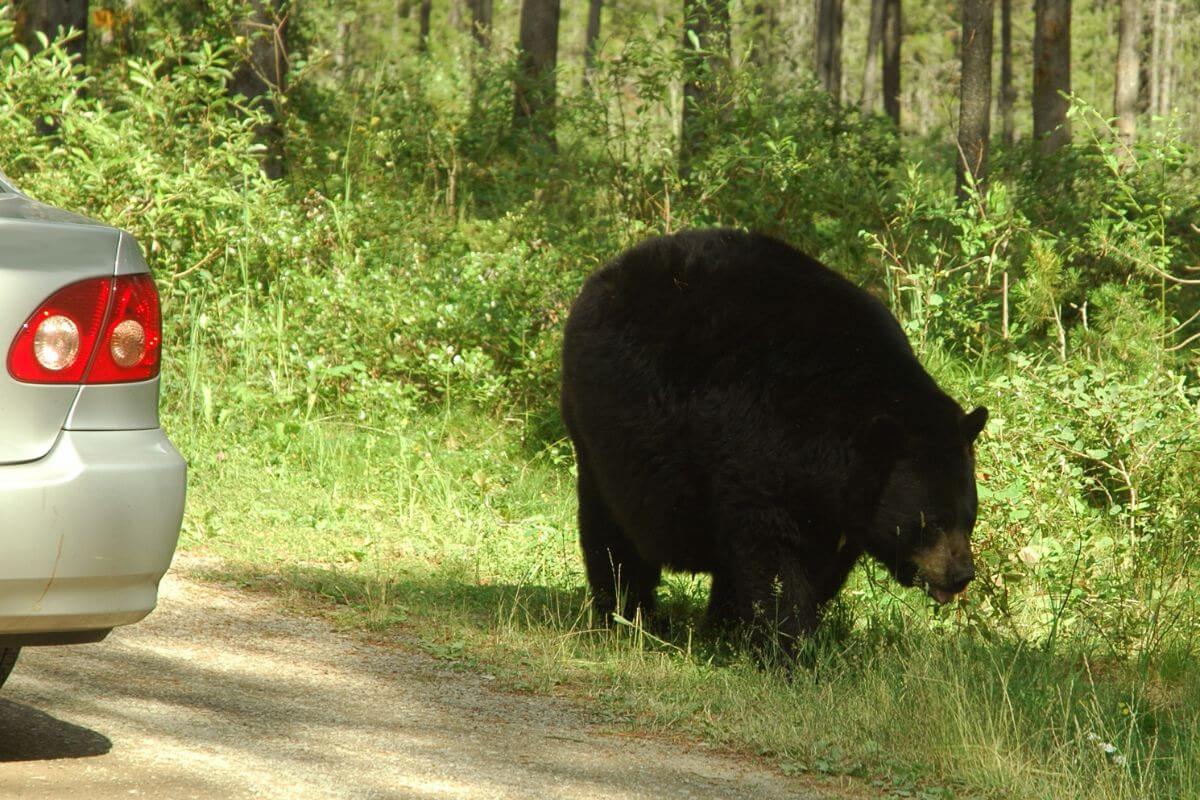
The best way to prepare for bear encounters in Montana is to plan ahead. Here’s what you should know if you ever come face-to-face with a bear:
- Plan Ahead – Always be ready for bear encounters by carrying bear spray in an easily accessible spot and understanding how to use it.
- Never Run – Running is a big no-no in bear country. Your movements can trigger a chase response in bears. Avoid this by standing your ground.
- Stand Your Ground – If a bear notices you, hold your position. Be calm, ready your bear spray, and observe its behavior. Most bears will leave on their own.
- Use Bear Spray – If a bear charges within 30-60 feet, aim and spray your bear deterrent directly at its face. This discourages the bear from attacking.
- Face Down or Fight Back – If a grizzly bear gets too close, play dead to avoid provoking further aggression. For black bears circling you or acting in a way that suggests they might attack, make yourself big, shout, and fight back if necessary.
I always make sure to keep my bear spray handy and practice using it so that if I ever encounter a bear, I’m prepared. Remember, being alert and knowing how to respond can make all the difference in a bear encounter.
Montana Bear Tours
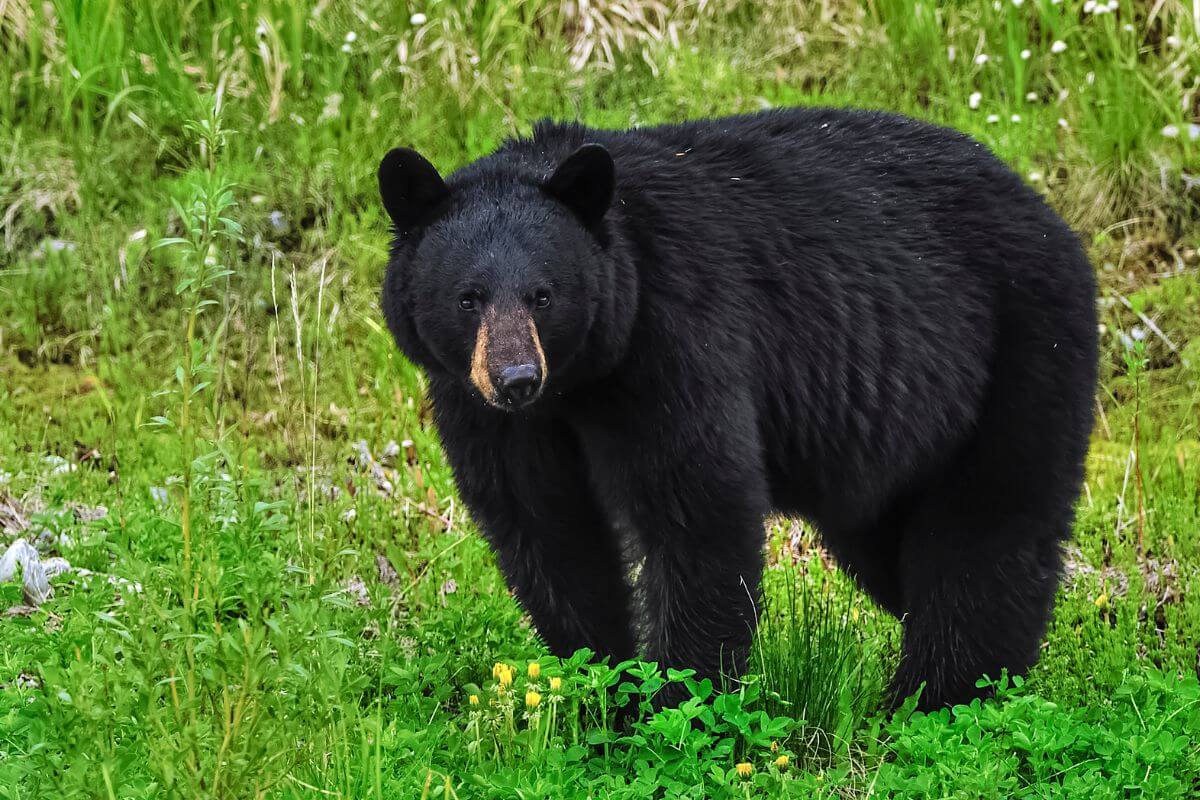
Montana bear tours open the door to an extraordinary world, offering the chance to see these fascinating animals in their natural habitat. When you head out on a bear tour in Montana with a knowledgeable guide, you’ll learn about their role in the ecosystem, and the efforts to protect and conserve grizzly bear populations.
These tours not only give you incredible wildlife experiences but also play a crucial part in promoting understanding and appreciation for bears, hopefully fostering a commitment to their preservation for generations to come.
Montana Grizzly Encounter
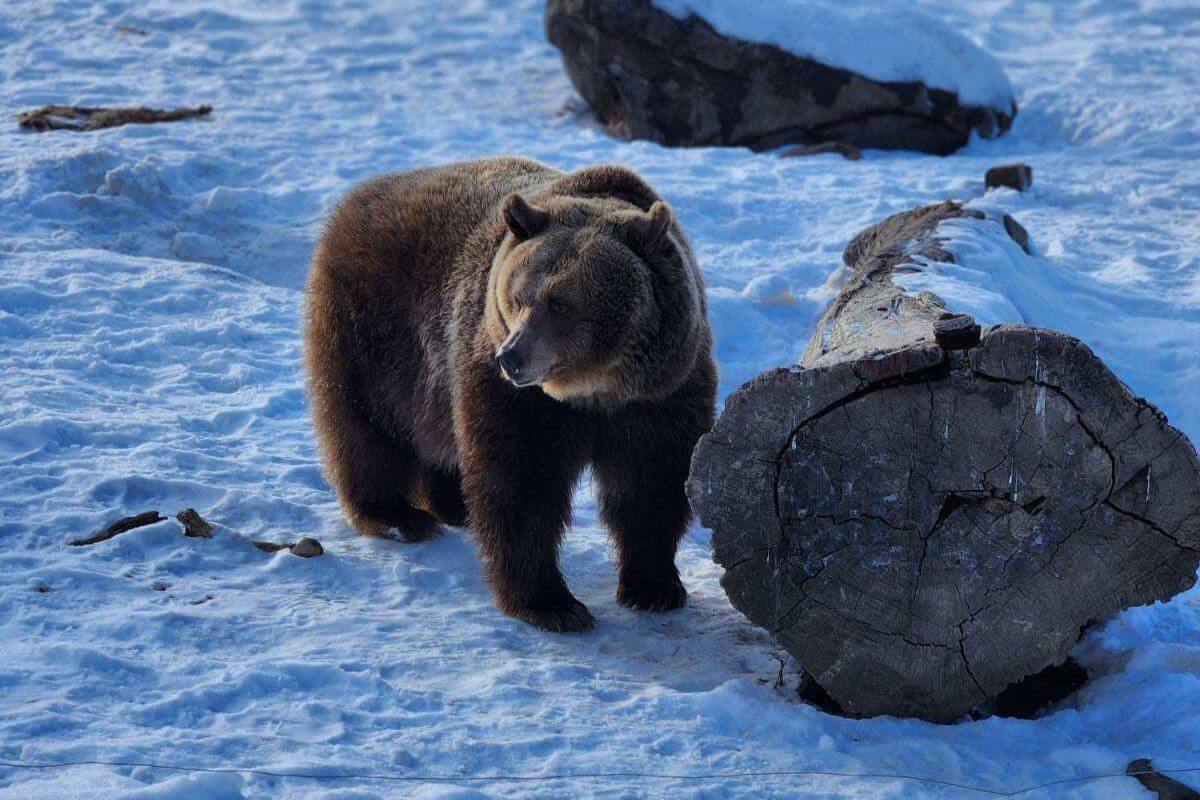
| Name | Location | Description |
|---|---|---|
| Montana Grizzly Encounter | Bozeman | Founded in 2004, this sanctuary focuses on providing a haven for grizzly bears in need, including those born in captivity or orphaned in the wild. |
When you visit Montana Grizzly Encounter, you step into a world where bears are truly at home. There are no cars, no cages, just the freedom to roam and play. Visitors get a rare chance to witness these incredible animals up close, set against the backdrop of Montana’s stunning mountains.
But the team at Montana Grizzly Encounter does more than just grizzly bear rescue. They are on a mission to teach people about grizzly bear safety and why it’s vital to conserve these powerful animals. Every year, thousands of children get the opportunity to learn from their experts.
Here are some of the bears you might meet on your visit to Montana Grizzly Encounter:
- Bella – Found in a backyard near Delta Junction, Alaska, at just 4-5 months old. Her story started in the wilds of Alaska in 2014.
- Max – Max loves nothing more than splashing around in the sanctuary’s ponds, all while having a blast with giant logs.
- Maggi – A rescue bear who thrives in her habitat, exploring and foraging her way through enriching activities.
The rates for tours are pretty reasonable, too:
| Age | Rates |
| Adults Ages 13 and Older | $12.50 |
| Seniors Ages 65+ | $11.50 |
| Children Ages 4-12 | $10.50 |
| Infants Ages 3 and Under | Free |
If you are into behavior study or simply love to see these magnificent animals in a safe, natural environment, Montana Grizzly Encounter is a must-visit. It’s a place that specializes in grizzly bear rescue but also gives back to the community through fun, and educational opportunities.
Grizzly & Wolf Discovery Center
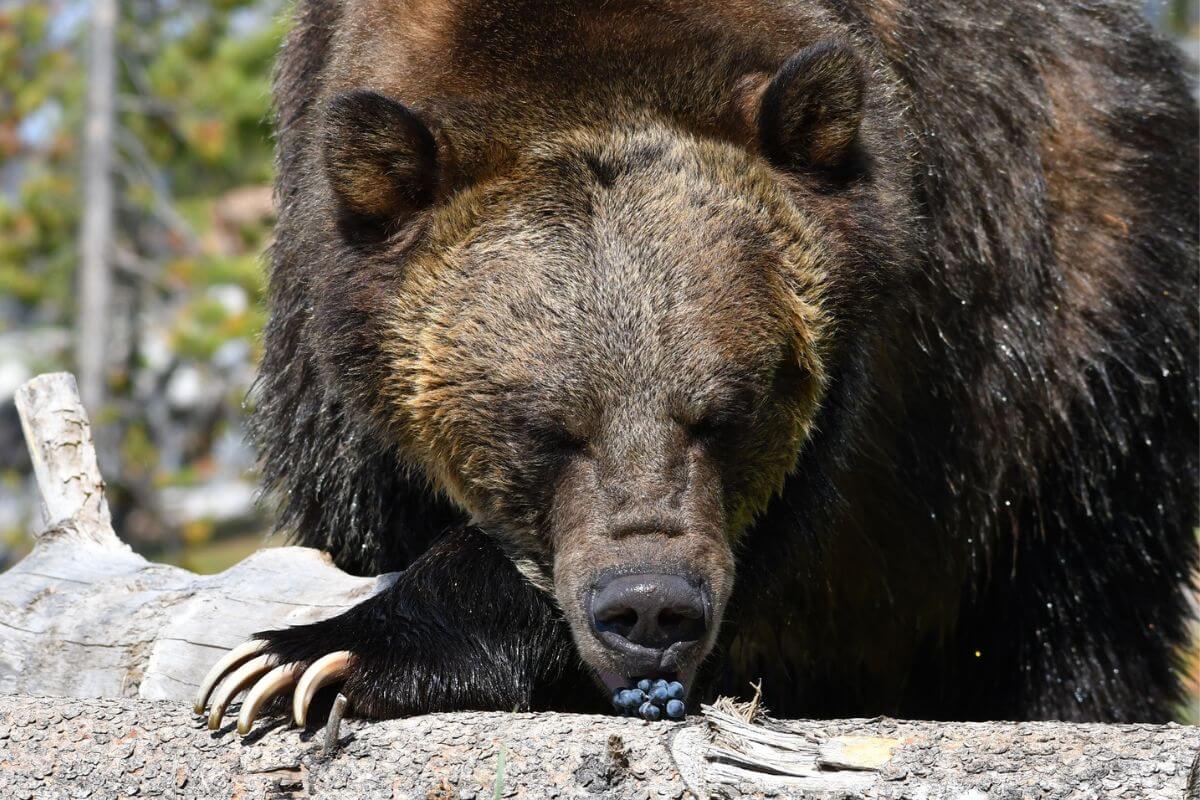
| Name | Location | Description |
|---|---|---|
| Grizzly & Wolf Discovery Center | Near the West entrance of Yellowstone National Park | An educational hub focused on grizzly bears and gray wolves, teaching the importance of wildlife conservation. |
One of the unique things about this center is that you can visit the animal residents any time of the year. Since the bears at the center don’t hibernate, you can watch them in action both indoors and out. The highlight is the bears’ spacious outdoor habitat, specifically designed to mimic their natural environment.
Let’s meet some of the bear stars at Grizzly & Wolf Discovery Center:
- Bo – A male grizzly bear, aged 4, named after the Rainbow Point Campground.
- Coram – A young bear who, due to unfortunate circumstances with human food, found a haven here.
- Condi and Seeley – A sister duo who brought their energy and love for play to the center in 2019.
- Nakina – Nakina and Kobuk (who passed in 2017) were part of a triplet litter, showcasing the center’s dedication to wildlife well-being.
- Spirit – Spirit, the first resident Montana Grizzly at the center, arrived in 2002, adding her calming presence to the bear community.
The Grizzly & Wolf Discovery Center is a not-for-profit organization, meaning they run on community support. Visiting, becoming a member, or giving a donation all help these animals, and the important work the center does. Here’s a look at their rates:
| Age | General Admission Fee | Group Rates |
| Adults (13 and older) | $16.50 | $15.50 |
| Seniors (62 +) | $15.50 | $14.50 |
| Children (5 – 12) | $11.50 | $11.00 |
| Children (4 & under) | FREE | FREE |
By visiting this center, you’re not just seeing the bears and wolves, you’re supporting their well-being and contributing to educational efforts that advocate for the conservation and mindful coexistence of these amazing species.
Yellowstone Wild
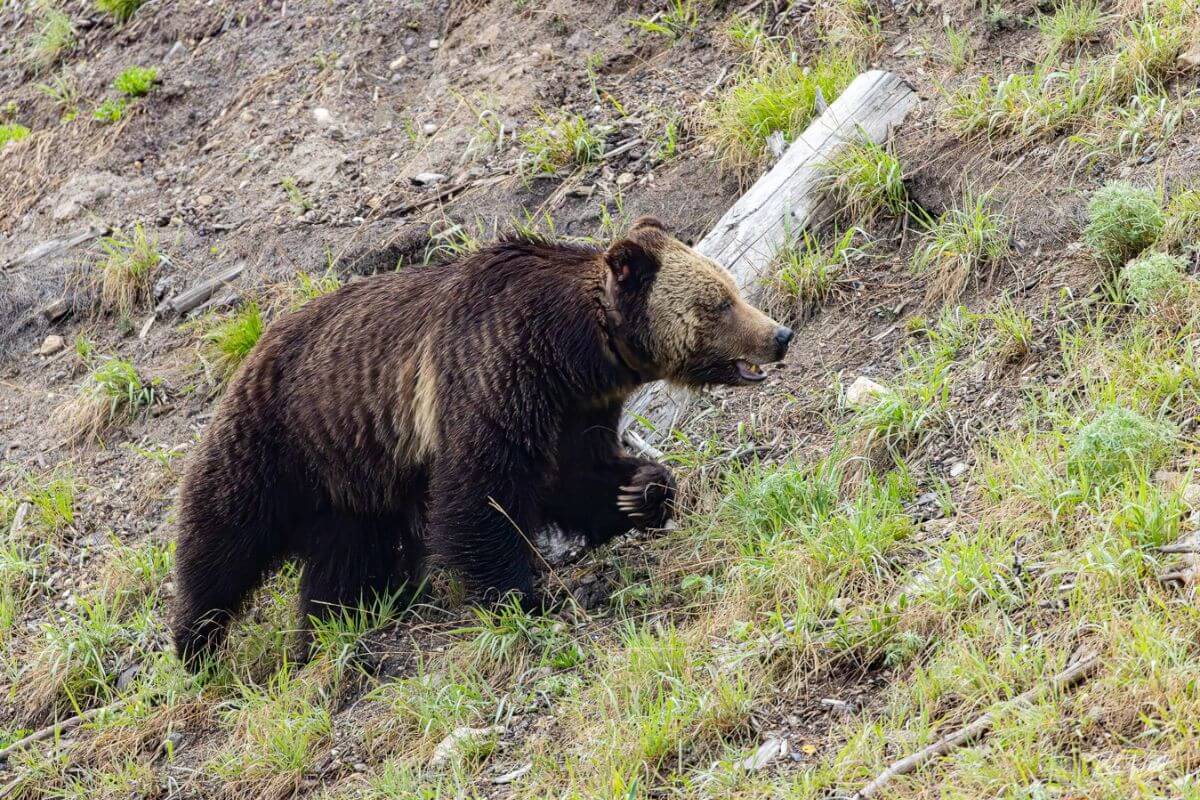
| Name | Location | Description |
|---|---|---|
| Yellowstone Wild | Gardiner | Offers custom wildlife, natural history, geology, and educational tours to showcase the best of Yellowstone. |
Guided by Yellowstone’s most experienced naturalists, equipped with top-of-the-line gear, and surrounded by the extraordinary beauty of nature, every tour with Yellowstone Wild promises thrilling wildlife sightings and a deep dive into Yellowstone’s natural and cultural history.
Specifically tailored Bear and Wolf Watching Tours are where Yellowstone Wild truly shines. Their guides, almost like wildlife detectives, track the daily movements and behaviors of Yellowstone’s most iconic creatures.
This dedication means they always know the prime spots to witness bears and wolves in their natural habitat. With an unmatched passion for the subject, your guide will not only interpret the behaviors you witness but also regale you with stories of individual animals, creating a personalized experience.
Here are some more details to help you plan your adventure with Yellowstone Wild:
- Duration – Plan for a full day; tours last 8 hours.
- Meeting Locations – You can start your tour from several locations within Yellowstone for your convenience: Gardiner, MT; Mammoth Hot Springs; Tower Junction; Roosevelt Lodge.
- Ages – These tours are perfect for 5-year-olds and up; just set the pace to match your group’s interests and abilities.
- Activity Level – Tailored to be easy to moderate; your guide will adjust the plan to suit what you’re most keen on.
Yellowstone Wild strives to keep the magic of bear and wolf watching accessible, with rates that depend on the size of your group. Here’s a quick guide to their pricing structure:
| Group Size | Rates |
| 1 to 2 people | $900 |
| 3 people | $950 |
| 4 people | $1,000 |
| 5 people | $1,050 |
| 6 people | $1,100 |
| 7 people | $1,150 |
| 8 people | $1,200 |
| 9 people | $1,250 |
| 10 people | $1,300 |
These rates ensure that groups of all sizes can go on an adventure of discovery and wildlife wonder. Whether you’re a solo traveler or bringing along a big bunch of explorers, Yellowstone Wild offers an insightful and thrilling journey into the heart of bear country.
Montana Bears Final Thoughts
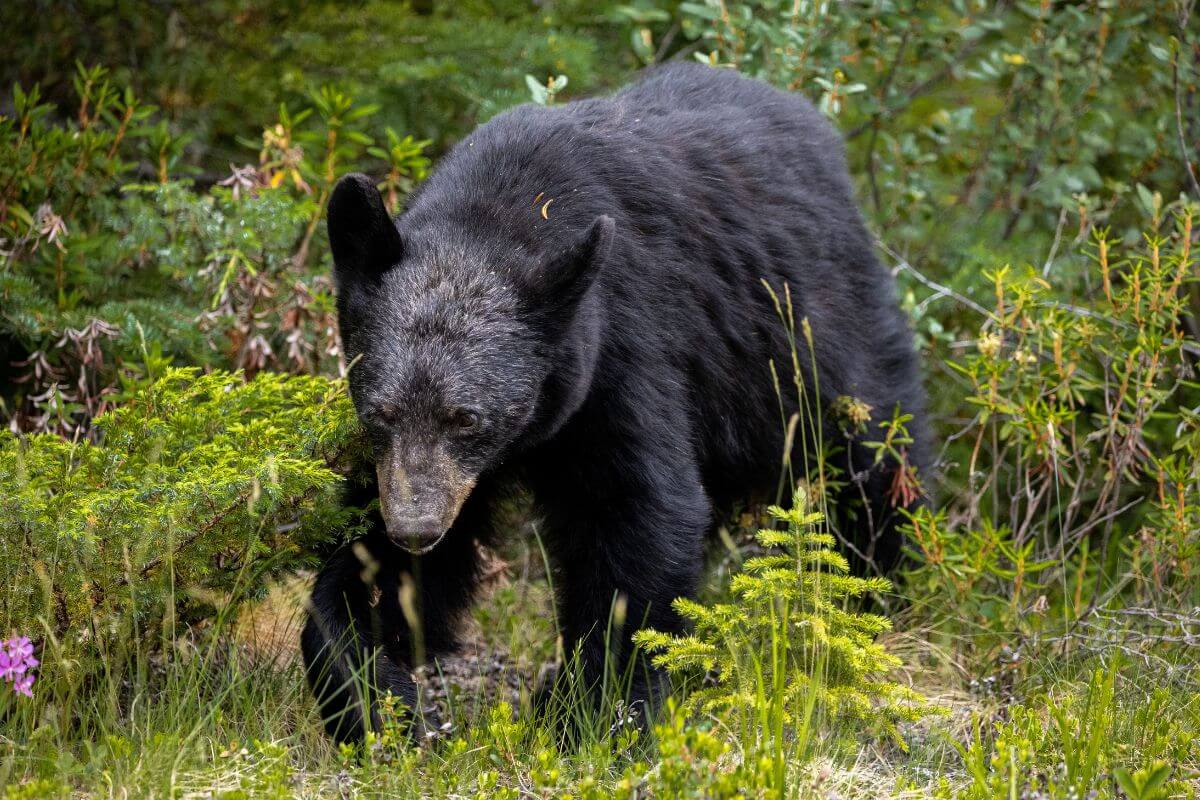
Montana’s bear population, from the mighty grizzlies to the sleek black bears, weaves a fascinating story of life in the state’s untamed landscapes. These creatures, essential to Montana’s ecological balance, offer a glimpse into the intricate web of life in the state.
Understanding the behavior, distinguishing features, and safety measures around bears is not just a practical concern but a vital step in honoring Montana’s commitment to wildlife conservation.
Guided bear tours, educational encounters at sanctuaries like Montana Grizzly Encounter and the Grizzly & Wolf Discovery Center, and responsible outdoor practices provide avenues for impactful connections with these animals.
They reinforce the importance of coexistence and awareness in bear country. As we continue to explore and learn about Montana’s bears, we deepen our respect for nature and promote a future where these magnificent creatures thrive alongside us, symbols of the state’s enduring wild spirit.
Montana Bears FAQs
1. What Types of Bears Are in Montana?
In Montana, you can find both black bears and grizzly bears. Black bears are more common and widely distributed throughout the state, while grizzly bears are primarily found in the western and southwestern regions.
2. How Common Are Grizzly Bears in Montana?
Grizzly bears are relatively common in Montana, particularly in the western and southwestern parts of the state, including areas like Glacier National Park and the Greater Yellowstone Ecosystem.
While their population has faced historical declines due to habitat loss, conservation efforts have helped stabilize their numbers, and bear sightings are not uncommon in their preferred grizzly bear habitats.
3. How Big Are Black Bears in Montana?
Black bears in Montana typically range in size, with adult males weighing between 200 to 400 pounds and adult females weighing between 100 to 250 pounds. However, some exceptional individuals can weigh more, particularly those with access to abundant food sources.
4. Can You Hunt Grizzly Bears in Montana?
No, grizzly bear hunting is not allowed in Montana. Grizzly bears are protected under the Endangered Species Act, and hunting them is strictly prohibited in the state.
5. Are Bears a Problem in Montana?
Bears, particularly black bears and grizzly bears, can pose challenges in Montana, especially in areas where human development encroaches upon their natural habitat.
Encounters with bears can occur, leading to occasional conflicts such as property damage, livestock predation, or, rarely, attacks on humans.
Dive into our collection of captivating articles about Montana below:
- https://fwp.mt.gov/conservation/wildlife-management/bear/be-bear-aware/bear-encounters
- https://fwp.mt.gov/conservation/wildlife-management/bear/be-bear-aware/living-bear-country
- https://fwp.mt.gov/conservation/wildlife-management/bear/be-bear-aware/recreating-camping
- https://fwp.mt.gov/conservation/wildlife-management/bear/be-bear-aware/hunting-angling
- https://www.facebook.com/photo.php?fbid=768394871992141&set=pb.100064649055276.-2207520000&type=3
- https://www.facebook.com/photo.php?fbid=698562175637314&set=pb.100064506137389.-2207520000&type=3
- https://www.facebook.com/photo.php?fbid=803694798428963&set=pb.100063653496918.-2207520000&type=3

